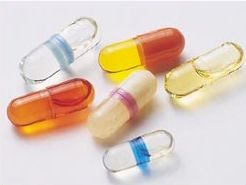Selecting Excipients for Liquid-Filled Hard Capsules

Thixotropic gels, thermosoftened systems, and self-emulsifying systems have expanded the range of potential excipients.
Liquid-filled hard capsules (LFHCs) are typically composed of a shell of gelatin or hydroxypropyl methylcellulose (HPMC) and filled with compatible liquids or compositions that can flow below 70 oC. LFHC technology offers several advantages over other solid dosage forms (1). It is crucial, however, to select excipients that are compatible with capsule shell integrity and suitable for the purpose of a formulation.
Excipient considerations
Capsule shell integrity. Hard-gelatin capsules contain 13–16% moisture. Hygroscopic vehicles such as glycerin, propylene glycol, and liquid polyethylene glycols (PEGs), however, cannot be used on their own because they will cause gelatin capsule shell brittleness and fracture. If the moisture content of a filled capsule does not change more than 2% at 65% relative humidity (RH) and 25 oC for six months, then the gelatin capsule will retain its integrity. PEG 400 and 600 can also distort HPMC capsules slightly due to swelling of shell walls caused by PEG diffusion. PEG 900 does not cause this problem. HPMC capsules (moisture content 3–8%) may be useful for moisture-sensitive and hygroscopic products and whenever capsules of vegetable source need to be used (2).
Jun 13, 2018
By Milind K. Biyani
Pharmaceutical Technology


